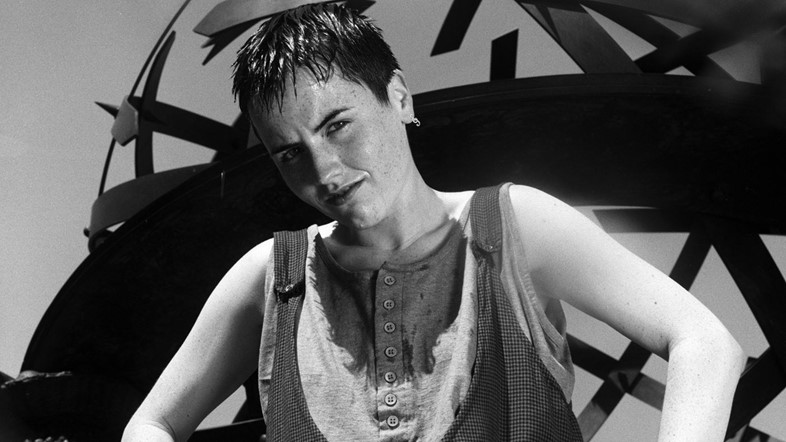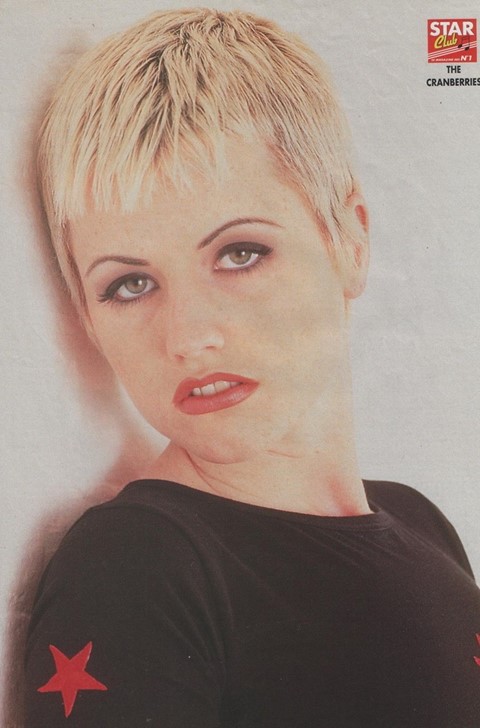Dolores O’Riordan, lead singer of 90s rock group The Cranberries, tragically passed away this week at the age of 46. Here, we honour her memory
The news of Dolores O’Riordan’s untimely and sudden death earlier this week hit particularly hard. The musician, who rose to fame in the early 1990s as lead singer of Irish rock group The Cranberries, was, for many, a pop culture icon emblematic of their adolescent angst; the same angst conveyed through the haunting vocals in hit singles such as Dreams, Linger and Ode to My Family.
Indeed, Linger was the self-penned song with which O’Riordan first auditioned to join The Cranberries at the age of 18, the single reaching the US top ten when she was just 21. Inspired by her first kiss – “I’d always thought that putting tongues in mouths was disgusting, but when he gave me my first proper kiss, I did indeed ‘have to let it linger’’’ – she said, it came to define her ability to convey personal and political anguish through a delicate, sean-nós-esque wail. Here, we honour her talent and style alike, as an AnOther Woman.

Seminal Moments
Born Dolores Mary Eileen O’Riordan in Ballybricken, County Limerick in 1971, she was the youngest of seven children and had a troubled upbringing, the pain of which was palpable in her songs written with The Cranberries. Their second studio album, No Need to Argue was released in 1993, which has since sold 17 million copies worldwide. In part, this is due to it containing the guttural protest song Zombie, made in tribute to the deaths of two children – aged three and 12 – in an IRA bombing in Warrington earlier that year. “It’s a tough thing to sing about,” said the musician. “But when you’re young you don’t think twice about things, you just grab it and do it.”
The iconic music video sees O’Riordan painted gold as a Celtic Cleopatra-like figure, in front of a large wooden crucifix. “In your head, in your head, they’re still fighting, with their tanks, and their bombs, and their bombs, and their guns, in your head, in your head, they are dying,” she cries. The song would later be televised on an episode of Saturday Night Live in 1995 – hosted by George Clooney – which has been credited as one of O’Riordan’s most powerful performances ever.

The Signature Style
As a teenager, O’Riordan was forbidden from wearing make-up or choosing her own clothes. So naturally, as part of The Cranberries she rebelled, becoming a poster-girl of gothic grunge with her own signature twist. Clad in Dr Martens, she cropped her hair short and dyed it either bleach blonde or black, pencilling on a spidery brow and lining the rims of her eyes with kohl. Her ears were studded from lobe to helix with jewellery, and ab-baring crop-tops became a permanent fixture in her wardrobe.
In 1994 she married Don Burton (Duran Duran’s tour manager) wearing sheer lace leggings, white knee-high boots – lace-up, of course – and a white lace bra showing through her sheer veil. Upon the news of her death this week, photographer Brenda Fitzsimmons, who was commissioned to take photographs of the wedding, tweeted: “Desperately saddened to hear the news of [Dolores O’Riordan’s death]. Remember covering her wedding for i, her outfit and arrival, steering a horse-drawn carriage with her veil blowing in the wind was so ballsy I nearly forgot to take pictures.”
She’s an AnOther Woman Because...
Dolores O’Riordan sits alongside the likes of Sinead O’Connor, Kathleen Hanna, Courtney Love and Kim Deal of The Breeders in terms of women who came to represent female autonomy the male-dominated rock scene. Alongside such figures, she helped to re-define and re-position the ways in which women in popular culture are represented; it was possible to be beautiful, fierce and self-governing all at once. O’Riordan also battled many demons throughout her life, finally being diagnosed with bipolar disorder a few years ago. Despite this, over the course of her career, her strength of character shone through in the songs she wrote that remain, to this day, some of the most seminal in music history.
